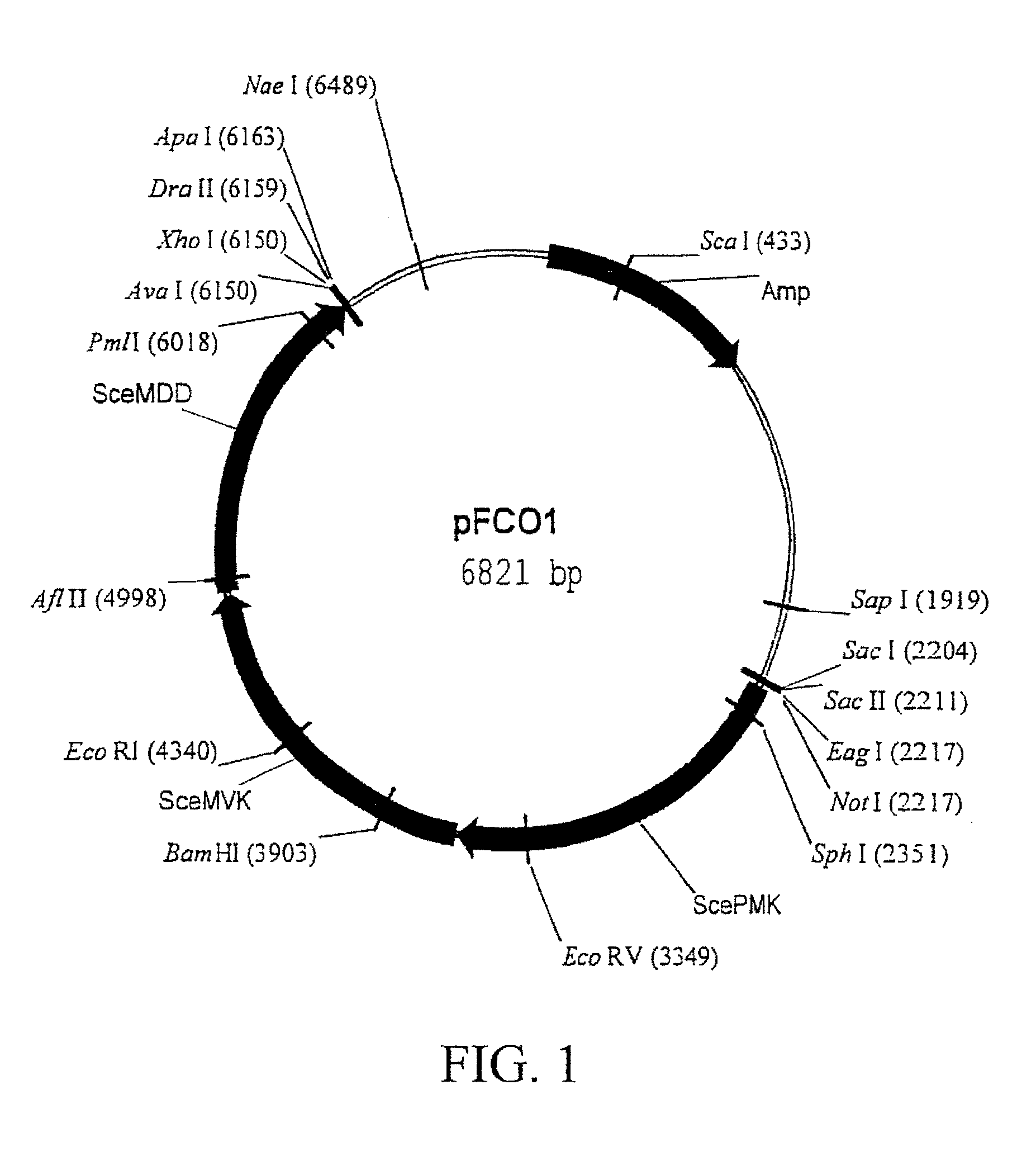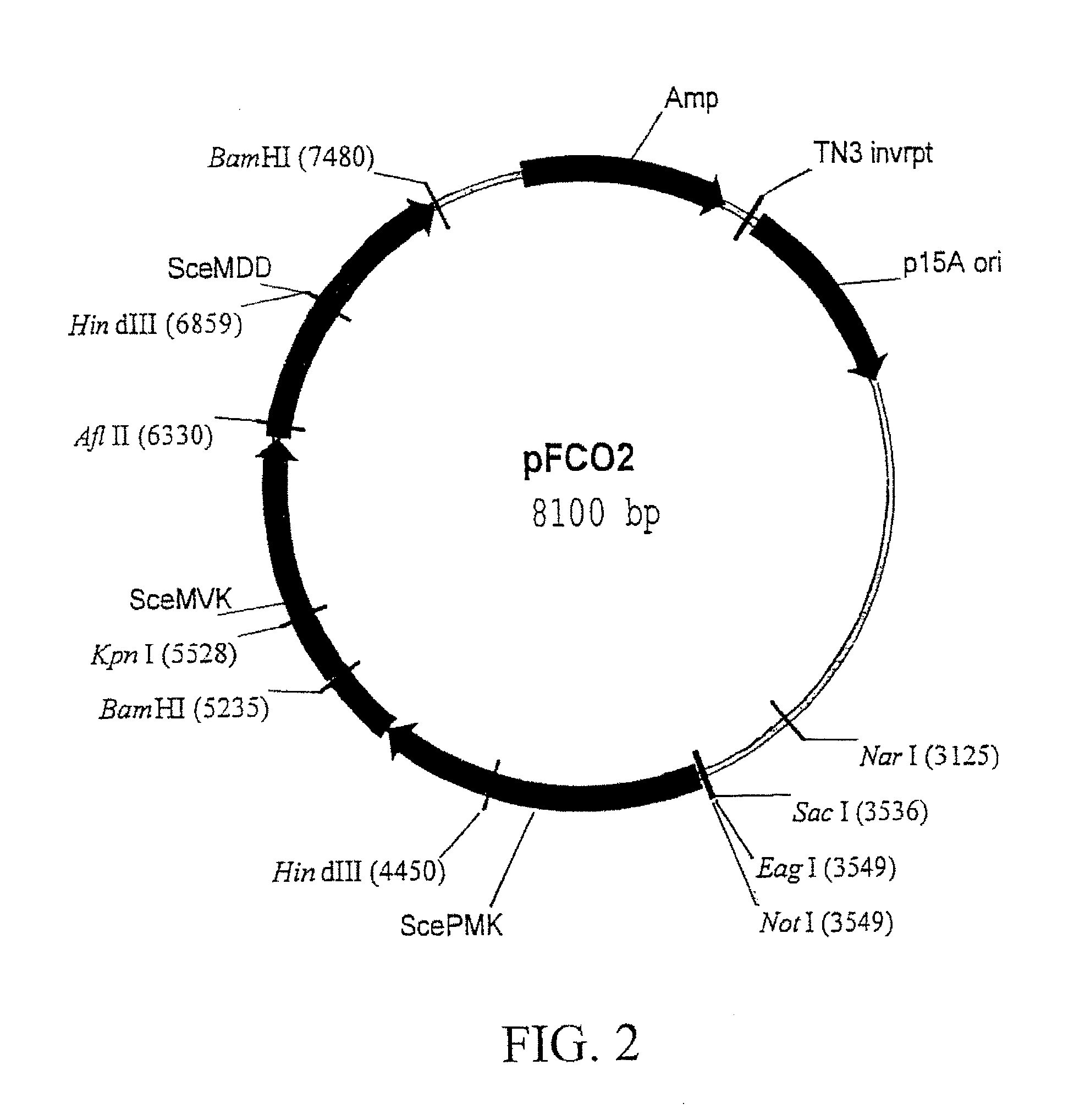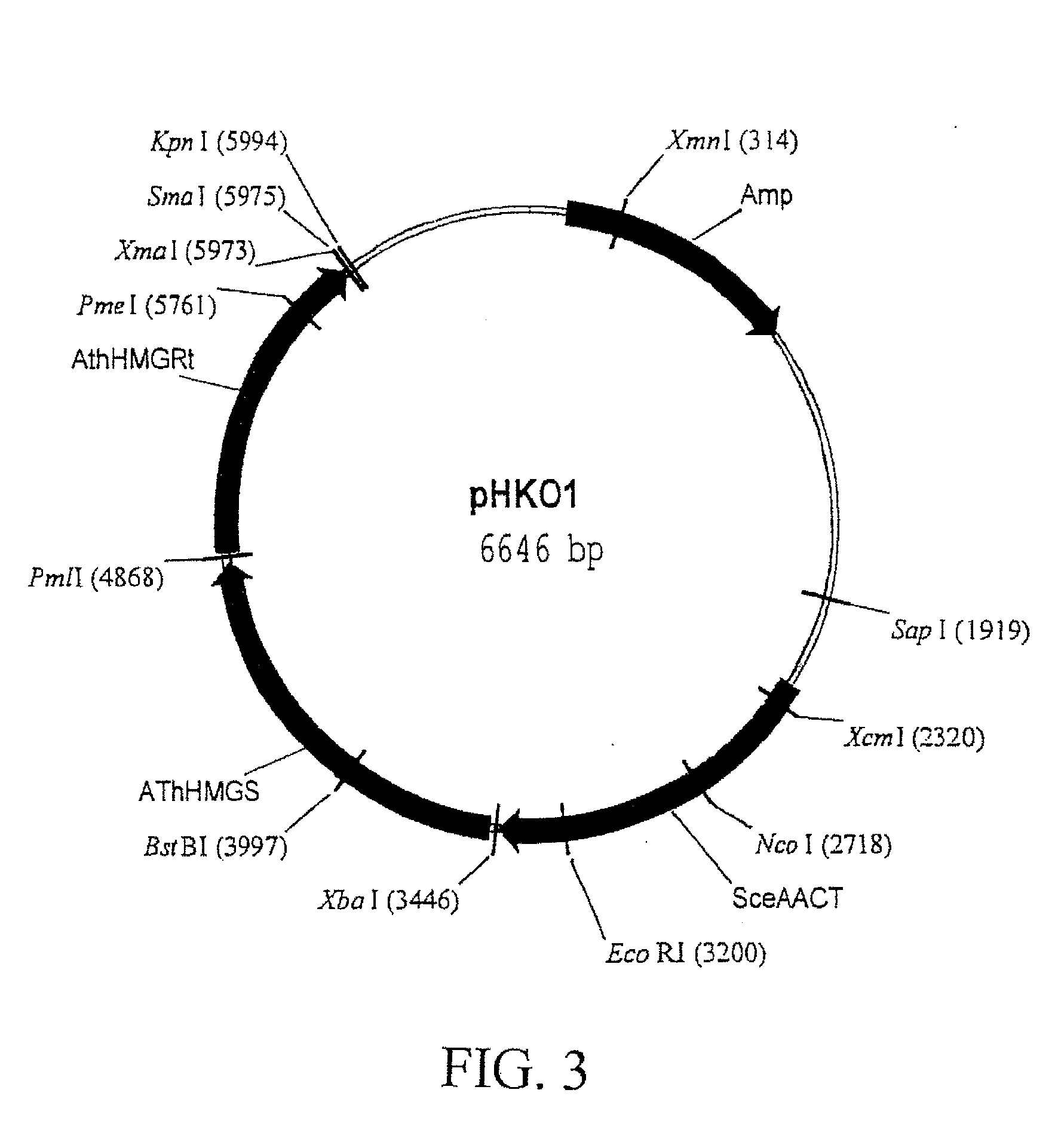Gene positioning system for plastidic transformation and products thereof
a technology of plastid transformation and positioning system, applied in the field of biotechnology and genetic engineering, can solve the problems of low transgene expression level, many bacterium genes have either been lost, and the need for high transgene expression level for effective phenotypes such as vitamin levels and herbicide and pest resistance levels, etc., to achieve the effect of promoting homogeneity of the transformed chloroplas
- Summary
- Abstract
- Description
- Claims
- Application Information
AI Technical Summary
Benefits of technology
Problems solved by technology
Method used
Image
Examples
example 1
Isolation of Orfs Encoding Enzymes of the Mevalonate Pathway for the Construction of Vectors pFCO1 and pFCO2
[0253]In an exemplified embodiment, vectors containing open reading frames (orfs) encoding enzymes of the mevalonate pathway are constructed. Polynucleotides derived from the yeast Saccharomyces cerevisiae, the plant Arabidopsis thaliana, and the eubacterium Streptomyces sp CL190 are used for the construction of vectors, including plastid delivery vehicles, containing orfs for biosynthesis of the mevalonate pathway enzymes. Construction of the vectors is not limited to the methods described. It is routine for one skilled in the art to choose alternative restriction sites, PCR primers, etc. to create analogous plasmids containing the same orfs or other orfs encoding the enzymes of the mevalonate pathway. Many of the steps in the construction of the plasmids of the subject invention can utilize the joining of blunt-end DNA fragments by ligation. As orientation with respect to th...
example 2
Construction of E. coli Strain FH11 (JM101 / dxs::kanr / pDX4)
[0256]A mutant E. coli strain containing a disruption of the chromosomal dxs gene is constructed as described by Hamilton et al. (Hamilton et al., J. Bacteriol. 171:4617-4622, 1989). The strains are grown at 30° C. or 44° C. in Luria-Bertani (LB) supplemented with the following antibiotics as necessary; ampicillin (Amp) (50 (g / ml), chloramphenicol (Cam) (30 (g / ml), and kanamycin (Kan) (25 (g / ml). Within phagemid DD92 (F. R. Blattner, University of Wisconsin, Madison, Wis.) is a 19.8 Kb EcoRI fragment of E. coli genomic DNA containing dxs, the gene for DXP synthase. Following the isolation of the phage from E. coli strain LE392, DD92 is restricted with SphI, and the resultant 6.3 Kb fragment is isolated by agarose gel electrophoresis. GeneClean purification of the SphI fragment and restriction with SmaI yields a 2.0 Kb SphI-SmaI fragment containing E. coli dxs. The 2.0 Kb fragment is purified by GeneClean and inserted by ligat...
example 3
Assay Demonstrating Synthesis of IPP from Mevalonic Acid in E. coli
[0257]The episomal copy of dxs contained on pDX4 in E. coli strain FH11 is “turned off” at 44° C. due to a temperature sensitive origin of replication on the pMAK705 derivative (Hamilton et al., J. Bacteriol. 171:4617-4622, 1989). The inability of FH11 to grow at the restrictive temperature demonstrates that dxs is an essential single copy gene in E. coli (Hahn et al., 2001). A cassette containing three yeast mevalonate pathway orfs is removed from pFCO1 and inserted into pNGH1-Amp to form pFCO2 for testing the ability of the mevalonate pathway orfs to complement the dxs::kanr disruption when FH11 is grown at 44° C. on medium containing mevalonate. The utility of strain FH11 as a component of an assay for testing the ability of mevalonate pathway orfs to direct the synthesis of IPP is demonstrated as follows:
[0258]Colonies of E. coli strain FH11 transformed with pFCO2 or pNGH1-Amp, the expression vector without an i...
PUM
| Property | Measurement | Unit |
|---|---|---|
| concentration | aaaaa | aaaaa |
| thermal melting point | aaaaa | aaaaa |
| temperature | aaaaa | aaaaa |
Abstract
Description
Claims
Application Information
 Login to View More
Login to View More - R&D
- Intellectual Property
- Life Sciences
- Materials
- Tech Scout
- Unparalleled Data Quality
- Higher Quality Content
- 60% Fewer Hallucinations
Browse by: Latest US Patents, China's latest patents, Technical Efficacy Thesaurus, Application Domain, Technology Topic, Popular Technical Reports.
© 2025 PatSnap. All rights reserved.Legal|Privacy policy|Modern Slavery Act Transparency Statement|Sitemap|About US| Contact US: help@patsnap.com



